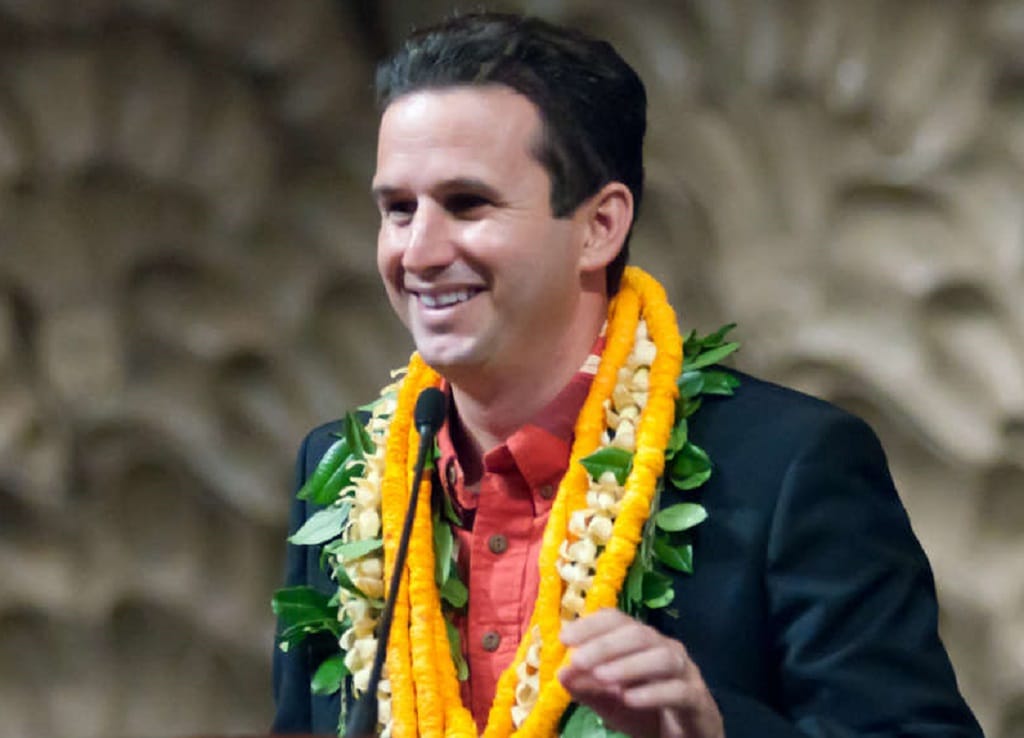Big Bucks for Broadband in the Balance: Explaining the Affordable, Accessible Internet for All Act
If you have been following our series on the Accessible, Affordable Internet for All Act, you already know the proposed legislation calls for a $100 billion investment in expanding broadband access and affordability in unserved and underserved parts of the country. In this fourth installment of the
Sean Gonsalves

If you have been following our series on the Accessible, Affordable Internet for All Act, you already know the proposed legislation calls for a $100 billion investment in expanding broadband access and affordability in unserved and underserved parts of the country.
In this fourth installment of the series, we explore the part of the bill that contains the bulk of the funding. Of the $100 billion proposed in the bill, $85 billion of it can be found in the Title III – Broadband Access section.
Amending the Communications Act of 1934, Section 3101 of the bill appropriates $80 billion for “competitive bidding systems” to subsidize broadband infrastructure. That is to say, it requires the Federal Communications Commission, and states, to use “competitive bidding systems” for Internet Service Providers to bid on broadband deployment projects in “areas with service below 25/25 Megabits per second (Mbps), and areas with low-tier service, defined as areas with service between 25/25 and 100/100 Mbps.”
The term “competitive bidding” seems to suggest a reverse auction process, though it hardly makes sense for each state to set up such a system given the logistical challenges. A legislative staffer responded to our email earlier this year saying he believed that language would allow for state programs that solicited applications from ISPs and scored them for evaluation, much like Minnesota’s Border-to-Border Broadband program operates. However, he noted that the FCC would interpret that language ultimately. More on this below.
Prioritizing Higher Upload Speeds

It’s worth noting that this part of the bill implicitly acknowledges the insufficiency of the current FCC definition of a minimum broadband speed of 25/3 Mbps. As it stands now, the FCC defines “unserved areas” as parts of the country where there is either no Internet access or broadband speeds under 25/3.
This legislation raises the bar and broadens the definition of “unserved areas.” It’s a step in the right direction, as there’s widespread support among broadband advocates for increasing the FCC definition of minimum broadband speeds to at least 100/100 Mbps.
By prioritizing higher upload speeds, as this bill does, it makes all the old, outdated copper wire technology irrelevant. In other words, to get the job done as called for in this legislation would require fixed wireless, fiber optics, or recent cable DOCSIS standards.
The $80 billion appropriated in this section creates two separate major sources of funding. It stipulates that 75% of the funds, or $60 billion, be dedicated for a national competitive bidding system for broadband deployment in unserved areas and low-tier service areas.
The other 25%, or $20 billion, would be used for states to set up competitive bidding systems for broadband deployment in, not only unserved and low-tier service areas (service between 25/25 and 100/100 Mbps), but also for underserved anchor institutions (schools, libraries, healthcare facilities, museums, public safety offices, or public housing agencies) with speeds less than 1 gigabit per 1,000 users.
The bill also allows for a state that does not have “unserved areas” or areas with “low-tier service,” for funding to be used for broadband deployment in areas with mid-tier service defined as more than 100/100 Mbps but less than 1 gigabit per second symmetrical.
In both the national and state competitive bidding systems, the legislation further requires that 20% of the funds ($12 billion for the national system and $4 billion for the state system) be used to deploy broadband that delivers 1 Gigabit per second symmetrical speeds. This strikes us as smart because as bandwidth demand continues to rise, it would be a waste of taxpayer dollars to fund broadband networks that rapidly become obsolete. Historically, WISPs may have objected to this, but since the Rural Digital Opportunity Fund (RDOF) rural auction, they seem confident in being able to deliver that capacity widely.
Funding Priority Preferences
Additionally, the bill goes on to specify funding priority preferences, the most important being projects that expand access to broadband service in areas where at least 90 percent of the population does not have access to 25/3 broadband service.
Other funding priority preferences include projects that would expand broadband access in “persistent poverty counties” and on Tribal lands. We believe it is crucial to set specific funds aside to deal with the historical refusal to invest in telecommunications infrastructure in Indian Country.
Another preference is for projects that would deploy open-access networks, which is a single high-quality network (fiber or wireless) that multiple ISPs can use to compete for customers. It’s a way of introducing competition in a market dominated by monopoly interests – a throwback to the days of dial-up when everyone used the same telephone wires to connect to the Internet and multiple ISPs competed for customers.
Not So Fast
While federal investment in broadband infrastructure is unquestionably needed (considering the failure of private ISPs to provide adequate, affordable and reliable Internet access to all) here’s where things get dicey as it relates to this major funding section of the AAIA, a part of the legislation that looked much better on paper before we saw what happened with the FCC’s recent RDOF auction that left many expert observers puzzled.
RDOF auctioned large swaths of rural areas of the U.S. that have no broadband access. Up to $16 billion was at stake though the auction will actually disperse some $9+ billion dollars because many areas were bid well below what was expected and to the point where some were bid down so far that it is almost certainly not economical to build.
In a nutshell, much of RDOF funding went to ISPs for projects where many familiar with the industry question whether they have the capacity to deliver. As our own Christopher Mitchell, who has been closely analyzing RDOF, notes: “RDOF should not give any faith that a national competitive auction is a good way to subsidize. I would not want to see an auction with so much more money after RDOF until we know the FCC can properly vet bidders. It’s probably the right amount of money (in AAIA) but it should be distributed over multiple years with local input.”
It’s not that the competitive bidding system envisioned in the legislation is inherently flawed, but in light of RDOF, it highlights the importance of ensuring the auction rules are fine-tuned, part of which should provide for local government to have a say in which ISPs do the work in their respective communities. In fact, it would make sense to revise the language in this bill to give preference for projects that are endorsed by the local governments in the project area.
Another item missing from the funding priority preferences section is one that preferences cooperatives and municipal governments looking to build locally-accountable networks. A preference for cooperatives and local governments makes sense primarily because they are directly responsible to local citizens in ways private companies often are not.
Infrastructure Bank
None of this should give the impression that local governments or public entities are completely overlooked in this bill. In fact, Section 3201 of the bill, would establish a $5 billion Broadband Infrastructure Financing Innovation (BIFIA) program. We’re talking about an infrastructure bank that would be administered by the National Telecommunications and Information Administration (NTIA) to provide state and local governments, public authorities, and public-private partnerships financial assistance in the form of secured loans, lines of credit, and loan guarantees.

To be eligible, the legislation requires the NTIA to determine that BIFIA funding for the project do three things: (a) foster partnerships to attract private and public investment for the project; (b) enable the project to proceed at an earlier date than the project would otherwise be able to proceed; and (c) reduce the Federal contribution for the project. Preference will be given for open access projects.
Section 3210 requires the Assistant Secretary of Commerce for Communications and Information to report to Congress one year after the bill is enacted and every two years thereafter “summarizing the financial performance of the projects that are receiving, or have received, assistance under the BIFIA program, including a recommendation as to whether the objectives of the BIFIA program are best served by [either] continuing the program under the authority of the Assistant Secretary; or establishing a Federal corporation or federally sponsored enterprise to administer the program.”
The final part of the “Title III – Broadband Access” portion of the bill, Section 3301, is unrelated to building broadband networks but would extend the E-rate program to include providing Wi-Fi access on school buses. No dedicated funds are appropriated for this as the legislation anticipates the funding would come from E-rate, which another section of the bill seeks to appropriate an additional $5 billion to expand broadband access for students off-campus as the existing E-rate program only provides for on-campus connectivity.
Our next installment in this series will look at the last three “Titles” of the bill: Title IV – Community Broadband; Title V – Broadband Infrastructure Deployment; and Title VI – Repeal of Rule and Prohibition on Use of NPRM.
Editor’s Note: This piece was authored by Sean Gonsalves, a senior reporter, editor and researcher for the Institute for Local Self Reliance’s Community Broadband Network Initiative. Originally published on MuniNetworks.org, the piece is part of a collaborative reporting effort between Broadband Breakfast and the Community Broadband Networks program at ILSR.











Member discussion